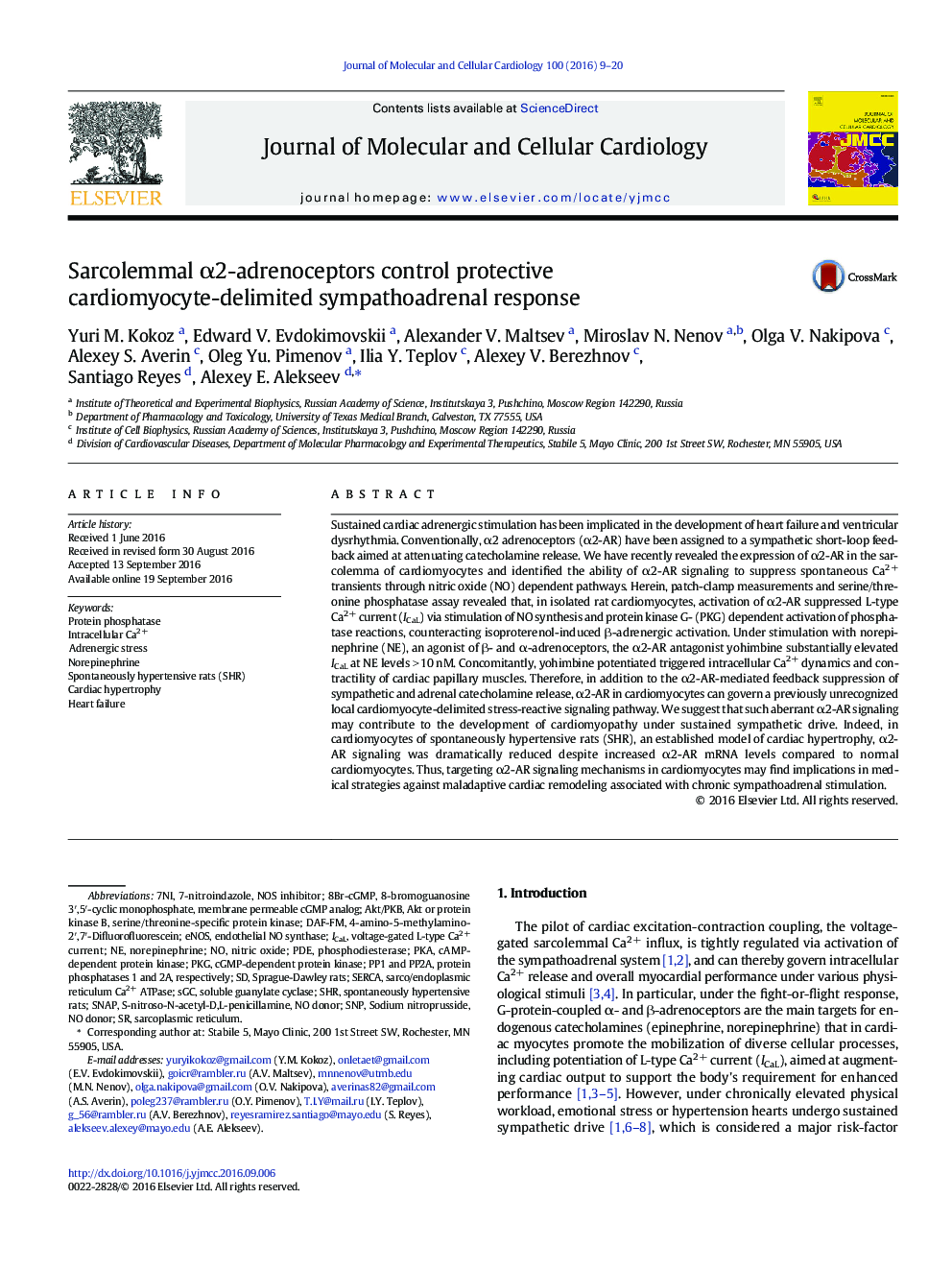| Article ID | Journal | Published Year | Pages | File Type |
|---|---|---|---|---|
| 5533639 | Journal of Molecular and Cellular Cardiology | 2016 | 12 Pages |
â¢Î±2-AR in cardiomyocytes suppress voltage-gated L-type Ca2 + channels (ICaL).â¢NO-dependent α2-AR signaling suppresses ICaL via cGPM - PKG-dependent routes.â¢Î±2-AR signaling alters kinase-phosphatase balance opposing β-adrenergic stimulation.â¢Î±2-AR control [Ca2 +]in and contractility outcomes during catecholamine surge.â¢aberrant α2-AR signaling in SHR cardiomyocytes may be linked to cardiac hypertrophy.
Sustained cardiac adrenergic stimulation has been implicated in the development of heart failure and ventricular dysrhythmia. Conventionally, α2 adrenoceptors (α2-AR) have been assigned to a sympathetic short-loop feedback aimed at attenuating catecholamine release. We have recently revealed the expression of α2-AR in the sarcolemma of cardiomyocytes and identified the ability of α2-AR signaling to suppress spontaneous Ca2+ transients through nitric oxide (NO) dependent pathways. Herein, patch-clamp measurements and serine/threonine phosphatase assay revealed that, in isolated rat cardiomyocytes, activation of α2-AR suppressed L-type Ca2+ current (ICaL) via stimulation of NO synthesis and protein kinase G- (PKG) dependent activation of phosphatase reactions, counteracting isoproterenol-induced β-adrenergic activation. Under stimulation with norepinephrine (NE), an agonist of β- and α-adrenoceptors, the α2-AR antagonist yohimbine substantially elevated ICaL at NE levels > 10 nM. Concomitantly, yohimbine potentiated triggered intracellular Ca2+ dynamics and contractility of cardiac papillary muscles. Therefore, in addition to the α2-AR-mediated feedback suppression of sympathetic and adrenal catecholamine release, α2-AR in cardiomyocytes can govern a previously unrecognized local cardiomyocyte-delimited stress-reactive signaling pathway. We suggest that such aberrant α2-AR signaling may contribute to the development of cardiomyopathy under sustained sympathetic drive. Indeed, in cardiomyocytes of spontaneously hypertensive rats (SHR), an established model of cardiac hypertrophy, α2-AR signaling was dramatically reduced despite increased α2-AR mRNA levels compared to normal cardiomyocytes. Thus, targeting α2-AR signaling mechanisms in cardiomyocytes may find implications in medical strategies against maladaptive cardiac remodeling associated with chronic sympathoadrenal stimulation.
